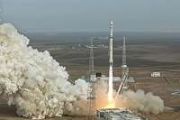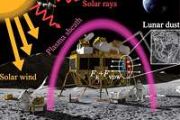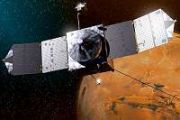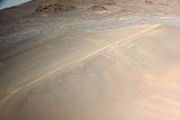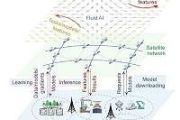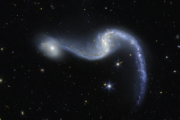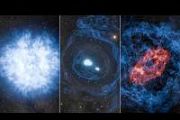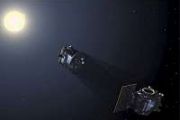
Copernical Team
Hubble pinpoints asteroid smash ups in nearby Fomalhaut system
 In a historical milestone, catastrophic collisions in a nearby planetary system were witnessed for the first time by astronomers using the NASA/ESA Hubble Space Telescope. As they observed the bright star Fomalhaut, the scientists saw the impact of massive objects around the star. The Fomalhaut system appears to be in a dynamical upheaval, similar to what our solar system experienced in its firs
In a historical milestone, catastrophic collisions in a nearby planetary system were witnessed for the first time by astronomers using the NASA/ESA Hubble Space Telescope. As they observed the bright star Fomalhaut, the scientists saw the impact of massive objects around the star. The Fomalhaut system appears to be in a dynamical upheaval, similar to what our solar system experienced in its firs Webb maps carbon rich atmosphere on distorted pulsar planet
 Scientists using NASA's James Webb Space Telescope have identified an exoplanet with an atmosphere unlike any seen before, orbiting a rapidly spinning neutron star known as a pulsar. The object, officially designated PSR J2322-2650b, has a mass comparable to Jupiter but is stretched into a lemon-like shape by the strong gravitational pull of its compact host star. Its atmosphere appears dominate
Scientists using NASA's James Webb Space Telescope have identified an exoplanet with an atmosphere unlike any seen before, orbiting a rapidly spinning neutron star known as a pulsar. The object, officially designated PSR J2322-2650b, has a mass comparable to Jupiter but is stretched into a lemon-like shape by the strong gravitational pull of its compact host star. Its atmosphere appears dominate CoDICE instrument returns first-light particle data for IMAP mission
 December 16, 2025 - Southwest Research Institute's Compact Dual Ion Composition Experiment (CoDICE) instrument aboard NASA's Interstellar Mapping and Acceleration Probe (IMAP) spacecraft has begun returning first-light particle measurements. IMAP launched in September to help researchers better understand the boundary of the heliosphere, the magnetic bubble that surrounds and protects our solar
December 16, 2025 - Southwest Research Institute's Compact Dual Ion Composition Experiment (CoDICE) instrument aboard NASA's Interstellar Mapping and Acceleration Probe (IMAP) spacecraft has begun returning first-light particle measurements. IMAP launched in September to help researchers better understand the boundary of the heliosphere, the magnetic bubble that surrounds and protects our solar SPHEREx completes first full sky infrared map of the cosmos
 Launched in March 2025, NASA's SPHEREx space telescope has completed its first infrared map of the entire sky, capturing data in 102 distinct wavelengths that are invisible to human eyes but common throughout the cosmos.
SPHEREx, which stands for Spectro-Photometer for the History of the Universe, Epoch of Reionization, and Ices Explorer, surveys the sky from Earth orbit about 14.5 times p
Launched in March 2025, NASA's SPHEREx space telescope has completed its first infrared map of the entire sky, capturing data in 102 distinct wavelengths that are invisible to human eyes but common throughout the cosmos.
SPHEREx, which stands for Spectro-Photometer for the History of the Universe, Epoch of Reionization, and Ices Explorer, surveys the sky from Earth orbit about 14.5 times p Starlight falls short in giant star wind power
 Astronomers report that starlight acting on stardust around the red giant star R Doradus cannot by itself power the strong stellar winds that spread key elements for life across the galaxy.
For decades, models of red giant winds have assumed that radiation pressure on newly formed dust grains is the main driver of mass loss in these evolved stars, which enrich interstellar space with carbo
Astronomers report that starlight acting on stardust around the red giant star R Doradus cannot by itself power the strong stellar winds that spread key elements for life across the galaxy.
For decades, models of red giant winds have assumed that radiation pressure on newly formed dust grains is the main driver of mass loss in these evolved stars, which enrich interstellar space with carbo Space ground fluid AI framework targets satellite powered 6G edge intelligence
 The race toward sixth generation 6G mobile networks is intensifying, with commercial deployment expected around 2030. The International Telecommunication Union ITU expects 6G systems to support scenarios such as integrated artificial intelligence and communication and ubiquitous connectivity. In this context, a recent article in the journal Engineering titled Space-Ground Fluid AI for 6G Edge In
The race toward sixth generation 6G mobile networks is intensifying, with commercial deployment expected around 2030. The International Telecommunication Union ITU expects 6G systems to support scenarios such as integrated artificial intelligence and communication and ubiquitous connectivity. In this context, a recent article in the journal Engineering titled Space-Ground Fluid AI for 6G Edge In When 5G networks bolster satellite navigation
 Finding accurate positions in dense urban areas remains difficult for satellite-based navigation systems, where high-rise buildings and signal blockages can cause large errors or complete loss of service. A recent study outlines a deeply integrated positioning method that combines commercial 5G New Radio (NR) signals with Global Navigation Satellite Systems (GNSS) to address these issues. By rei
Finding accurate positions in dense urban areas remains difficult for satellite-based navigation systems, where high-rise buildings and signal blockages can cause large errors or complete loss of service. A recent study outlines a deeply integrated positioning method that combines commercial 5G New Radio (NR) signals with Global Navigation Satellite Systems (GNSS) to address these issues. By rei Axelspace sets multi launch framework with Exolaunch for AxelLiner mission growth
 Axelspace Corporation has signed a multi-launch agreement with Exolaunch to support a series of missions using Axelspace microsatellites. The framework covers multiple launches and is intended to secure launch access and mission management for Axelspace programs, including new spacecraft assigned to in-orbit demonstration services.
Under the agreement, one satellite is scheduled to launch
Axelspace Corporation has signed a multi-launch agreement with Exolaunch to support a series of missions using Axelspace microsatellites. The framework covers multiple launches and is intended to secure launch access and mission management for Axelspace programs, including new spacecraft assigned to in-orbit demonstration services.
Under the agreement, one satellite is scheduled to launch AST BlueBird 6 enters orbit as record low Earth orbit cellular array
 AST SpaceMobile Inc. has confirmed the successful orbital launch of its BlueBird 6 satellite, described as the largest commercial communications array deployed in low Earth orbit and designed to support space-based cellular broadband services for commercial and government users.
The mission lifted off at 10:25 p.m. EST on December 23 from the Satish Dhawan Space Centre in Sriharikota, Indi
AST SpaceMobile Inc. has confirmed the successful orbital launch of its BlueBird 6 satellite, described as the largest commercial communications array deployed in low Earth orbit and designed to support space-based cellular broadband services for commercial and government users.
The mission lifted off at 10:25 p.m. EST on December 23 from the Satish Dhawan Space Centre in Sriharikota, Indi Wind-Sculpted Landscapes: Investigating the Martian Megaripple 'Hazyview'
 While much of Perseverance's work focuses on ancient rocks that record Mars' long-lost rivers and lakes, megaripples offer a rare opportunity to examine processes that are still shaping the surface today. Megaripples are sand ripples up to 2 meters (about 6.5 feet) tall that are mainly built and modified by wind. However, when water in the atmosphere interacts with dust on the ripple surface, a
While much of Perseverance's work focuses on ancient rocks that record Mars' long-lost rivers and lakes, megaripples offer a rare opportunity to examine processes that are still shaping the surface today. Megaripples are sand ripples up to 2 meters (about 6.5 feet) tall that are mainly built and modified by wind. However, when water in the atmosphere interacts with dust on the ripple surface, a 

